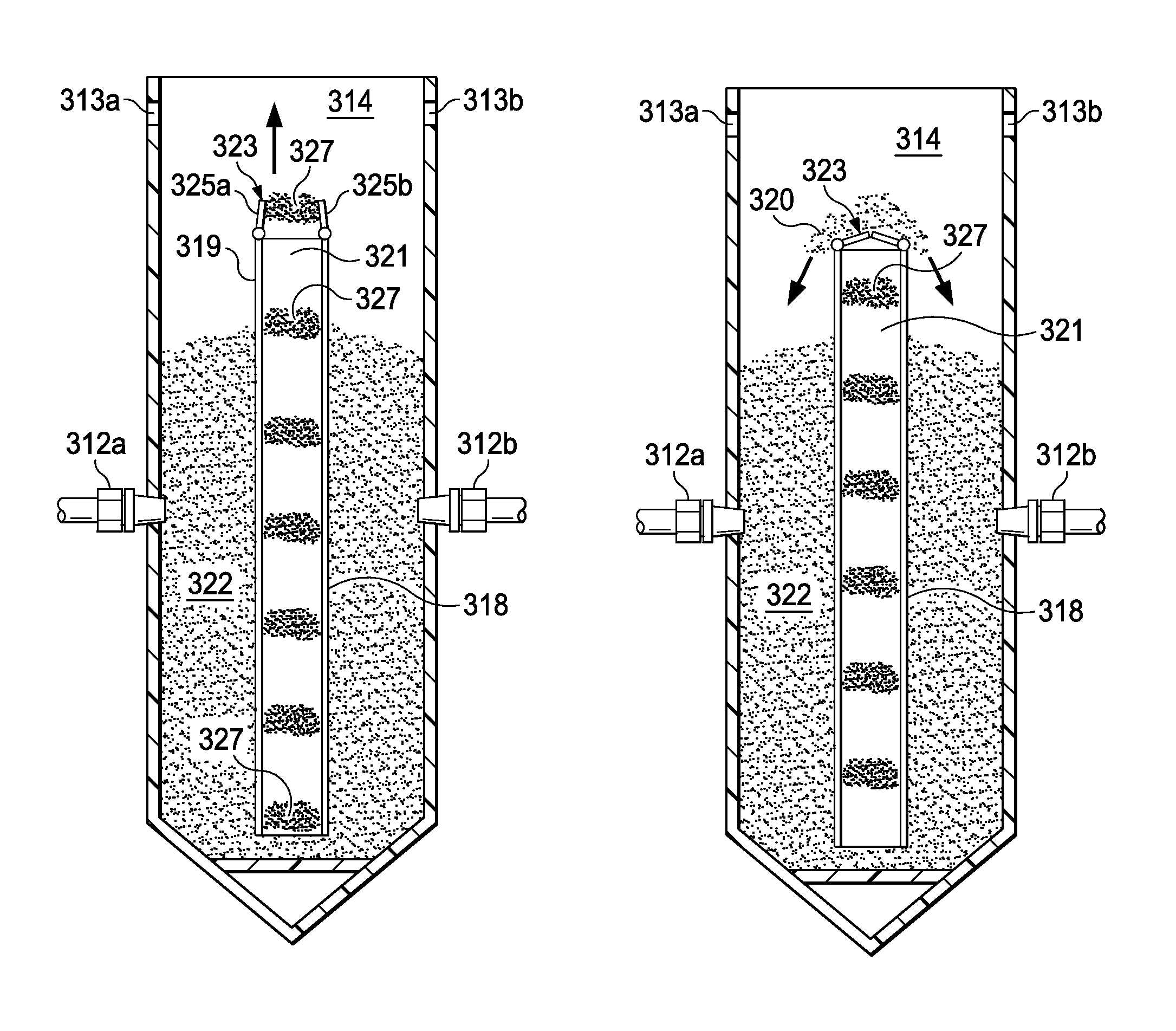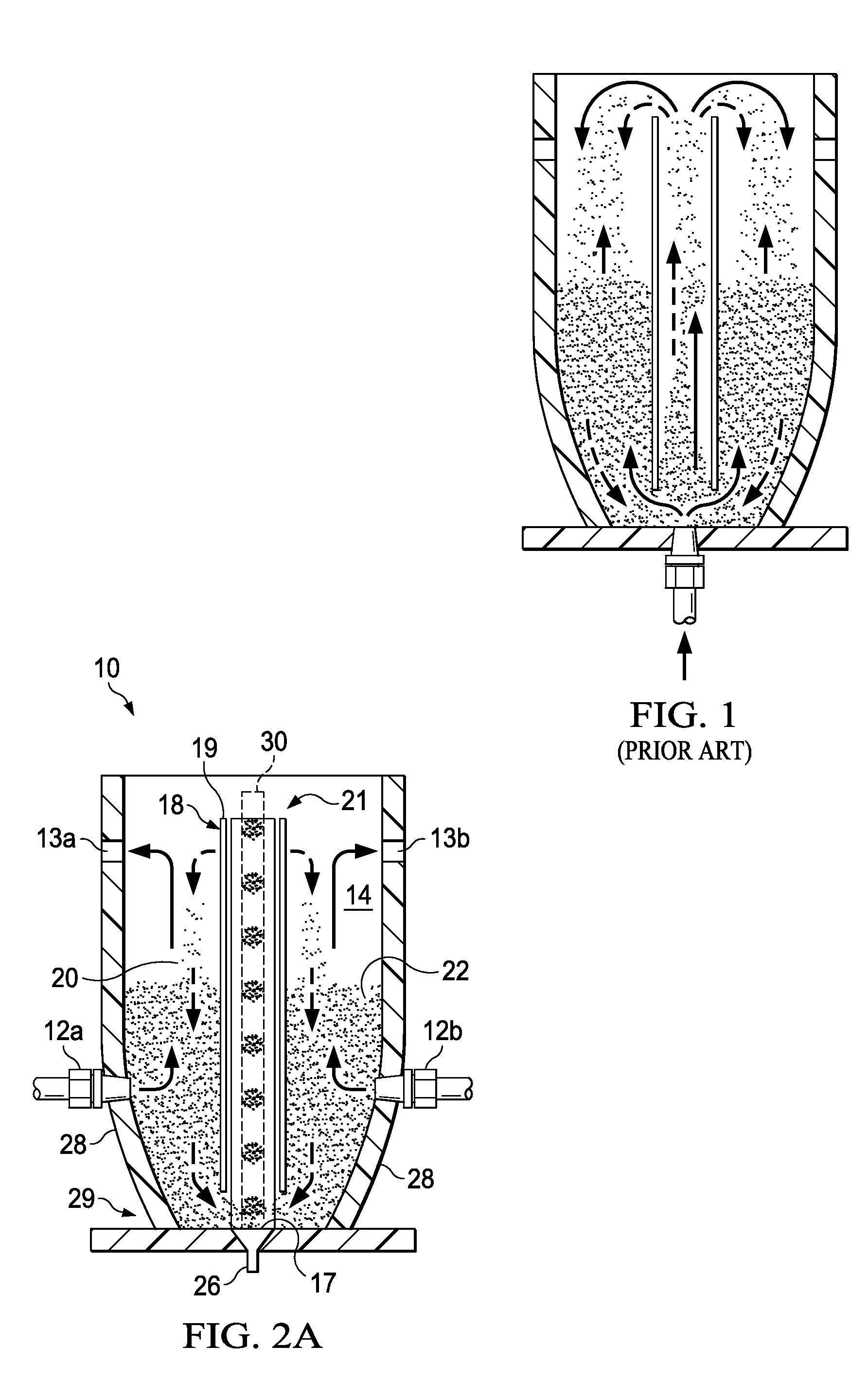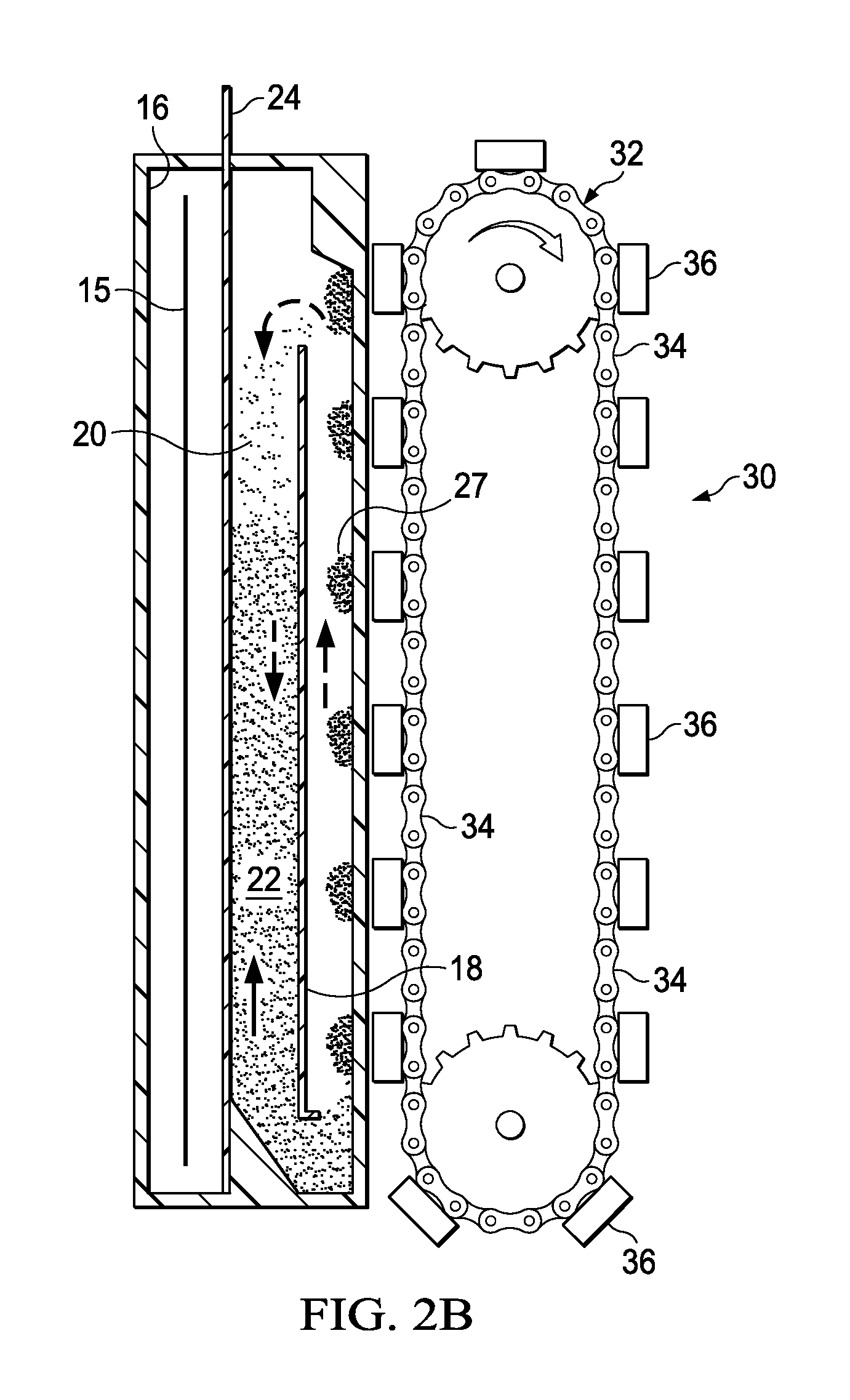Electrowinning apparatus and process
a technology of electrolysis apparatus and process, applied in the field of electrolysis, can solve the problems of low efficiency of processing dilute metal source, high capital cost, and electrode fouling, and achieve the effects of low efficiency when processing dilute metal sources, low capital cost, and high capital cos
- Summary
- Abstract
- Description
- Claims
- Application Information
AI Technical Summary
Benefits of technology
Problems solved by technology
Method used
Image
Examples
example 1
[0135]For a given set of MSET operating conditions, the relative electrowinning efficiency for each metal closely follows the relative reduction potentials making it possible for selective electro-refining from mixed sources. The effect of pH also has an influence on electrowinning efficiency and final metal concentration of the effluent in addition to the feed flow rate and current density as mentioned above. These effects are illustrated in FIG. 11 for nickel using a MSET system configuration similar to that shown in FIGS. 4A-B with different feed solution flow rates and pH (constant current density). At high feed-flow rate there is no removal of nickel, however, these same conditions promote the good copper removal shown in FIG. 12. Reducing the feed flow rate or raising the pH leads to nickel removal, even at very low concentrations. Higher current densities will further increase nickel (and zinc) removal rates. The performance improvement of a MSET system ...
example 2
Parameterization of Process Variables
[0137]The new magnetically spouted electrolytic technology has made possible for the first time the parameterization of the process variables, allowing significant advances to be made in electrowinning rate, efficiency and selectivity. These advances have provided the performance necessary to design simple, low-cost, flow-through metal recovery and refining systems for direct capture of valuable metals from a variety of aqueous sources too dilute to be economically viable with currently available technology.
[0138]Since the metal removal rate in a flow-through treatment system is paramount, a series of experiments were conducted to determine how to best increase metal removal rates by adjusting the flow rate and cell current density. The range of operating conditions examined is given in Table 2 and Table 3. The range of flow rates encompassed an acceptable range for a pilot-scale system, such as that described above and illustrated in FIGS. 6 and...
example 3
[0149]During the course of carrying out the foregoing studies it was discovered that when the anode and cathode solutions were isolated from one another, a partial electrical short from the system was eliminated, and greatly reduced the current density (at constant voltage) at the cathode by about 10 times. This was found to be important for scale-up reactor process design, since the partial electrical short had not been previously identified and its contribution to the current density would change with changing reactor size and with the number of reactors in series. The greatly reduced current density allowed for a new process / production capability of this technology to be discovered, i.e., the selective production of reduced metal oxides by partial reduction of target metals in the presence of dissolved oxygen. This has not been previously described with respect to spouted cathode reactor technologies. Two of the metal oxides the system produced directly from...
PUM
| Property | Measurement | Unit |
|---|---|---|
| angle | aaaaa | aaaaa |
| angle | aaaaa | aaaaa |
| mean diameter | aaaaa | aaaaa |
Abstract
Description
Claims
Application Information
 Login to View More
Login to View More - R&D
- Intellectual Property
- Life Sciences
- Materials
- Tech Scout
- Unparalleled Data Quality
- Higher Quality Content
- 60% Fewer Hallucinations
Browse by: Latest US Patents, China's latest patents, Technical Efficacy Thesaurus, Application Domain, Technology Topic, Popular Technical Reports.
© 2025 PatSnap. All rights reserved.Legal|Privacy policy|Modern Slavery Act Transparency Statement|Sitemap|About US| Contact US: help@patsnap.com



